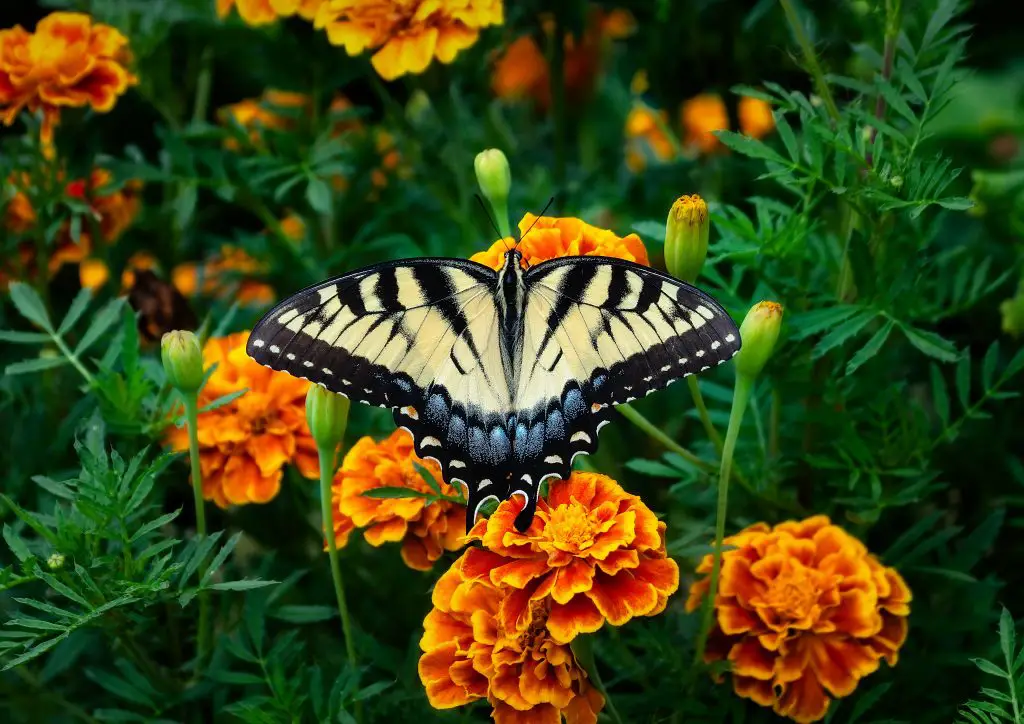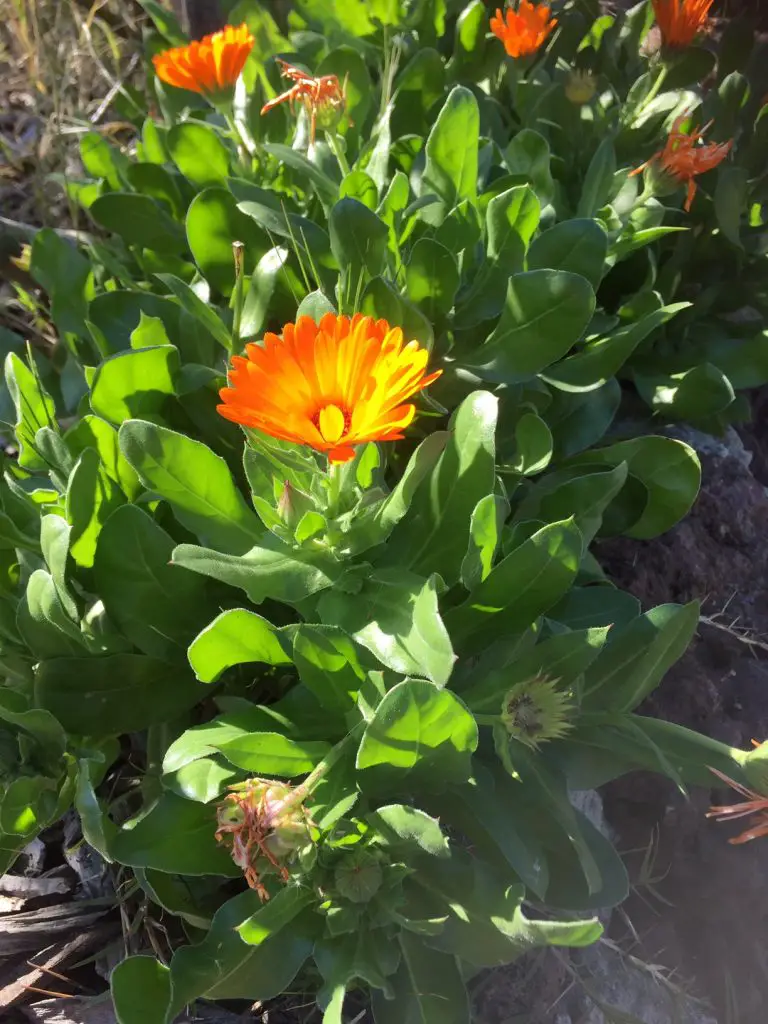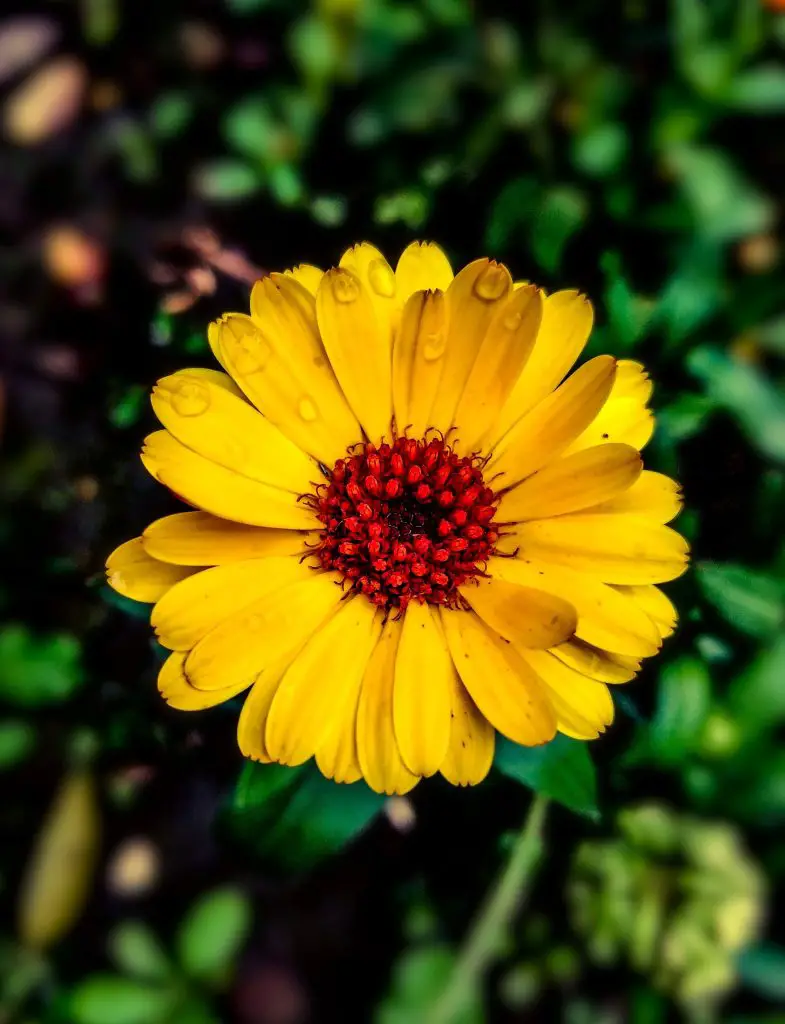Are Calendula And Marigold The Same Thing? Calendulas and Marigold are two of the most popular annual ornamental plants grown in cottage gardens. They are used to add a splash of color to the garden and also attract a range of pollinators but are they the same plant just under a different name?
Yes and No. Calendulas can be sometimes be referred to as Pot Marigold, Field Marigolds, and Scotch Marigold. However, there is also a range of different species that also have Marigolds within their names such as French Marigold, Mexican Marigold, Signet Marigold, and African (or Aztec) Marigolds which are closely related to each other but come from an entirely different genus to Calendulas.
However, as Calendulas (Calendula Officinalis and Calendula arvensis) is from an entirely different genus from many of the other Marigolds they have distinct characteristics that make the plant readily identifiable compare to these other species.
What Is The Difference Between Calendula And Other Marigolds?
There 15 to 20 different species that make up the Calendula Genus according to Wikipedia which produce flowers that are most commonly yellow or orange in colour though there are some varieties that also contain highlights of different colours. An example of this is the variety a “Touch of Red” which produces blooms that are orange/red in color with red mahogany color on the underside of the leaf.
The easiest way to distinguish the difference between the genus is to look at the shape of the foliage. Marigolds (from the Tagetes genus) have spindly leaves that have undulating edges. An example of the foliage shape is shown in the image below.

However, plants from the Calendula genus have simple leaves with a smooth rounded edge. Below is an image of a common variety that I have growing in my own garden at home which illustrates the difference.

The other obvious difference is the shape of the flower petals of the Calendula genus which is distinctly different in shape from the French Marigold, Mexican Marigold, Signet Marigold, and African (or Aztec) Marigold which all come from the Tagetes genus. Calendula petals are flat simple petals whereas the majority of plants from the Tagetes genus have ruffled petals.
Additionally, the seeds from both genus are distinctly different in shape. Tagete Marigolds have a seed that is reminiscent of a pine needle that is about half an inch in length, whereas the calendula seeds look more like a tiny curled-up worms forming a semi-circle.
The other distinct difference between the Calendula genus compare to other Marigold is the rate that it spreads. Once planted Calendula will self-seed readily throughout your garden. So much so that the US Department Of Agriculture has commissioned a report on the weed potential of one of the species within the calendula genus and found that it to be high risk.
But, anyone that has grown Calendula in their garden will not need a scientific study to tell them that calendula has high weed potential. However, as the plant is small and the root system is not very large it is not a difficult plant to remove. So for you average gardener on a suburban block, it is not a huge issue.

How To Grow Calendula
Calendulas are a frost-tolerant annual flower that will do well in cool climates but will not survive a harsh winter. The plant as you might have guessed is extremely easily propagated by seed.
Calendulas can be sow directly into the garden in early spring, a few weeks before the last frost in the spring. However, if you are keen to plant earlier the seeds can be started off indoors 6 to 8 weeks prior to the last frost. Because the plant generally does relatively well in cooler temperatures there is no need to provide much additional heat.
Calendula seeds should be fully covered in soil and planted at a depth of around half an inch. The reason for this is that the light inhibits the germination of the seeds. At a soil temperature of 55 F to 60 F you can expect the seeds to emerge after 7 to 14 days.
If you are planting seeds in trays seedlings should typically spend 4 to 6 weeks in the tray before planting them out in the garden.
Calendulas prefer to be grown in full sun but will tolerate partial shade and still produce a reasonable number of flowers. In terms of soil conditions, Calendulas prefer moist well-drained soil that contains plenty of organic matter. However, Calendulas are tolerant of a wide variety of soil conditions and will grow well as long as they receive sufficient moisture.
In terms of ongoing maintenance, it is best to deadhead the spent flowers to encourage the plant to continue to produce flowers. The plants will also benefit from a high in phosphorus fertilizer which will help increase the degree of flowering.
How To Grow Marigolds
Marigolds from Tagetes genus are an easy plant to grow but they are not frost tolerant like Calendulas. As a result of this seeds should not be planted out in the garden until the risk of frost has passed. However, I would generally advise starting the seeds off in trays indoors as this will allow you to provide a little more heat.
This is particularly important if you live in a cold climate. The easiest way to provide consistent heat is to use a heated propagation tray. The one we recommended is the iPower Heating Seed Starter Germination Kit, shown in the picture below largely because it has a vented humidity dome and is relatively inexpensive. Click on the link to see the current price on Amazon.

When sowing seed into a seed tray it is best to use a specific seed raising mix rather than a potting mix or garden soil. The reason for this is seed raising mix has a finer texture that will make good contact with the soil. Additionally, seed raising mix has excellent moisture retention properties.
Seeds should be sown at a depth of around half an inch. Seeds will typically take between 7 to 14 days to emerge and will need to spend 6 weeks in the seed tray before being planted in the garden. This can only be done after any risk of a late frost has passed.
When planting Marigolds out into the garden it is best to plant them in a sunny location as they are capable of tolerating high temperatures throughout the summer. African and signet marigolds are more drought-tolerant and the French marigolds which can tolerate damper conditions.
All of these plants can also tolerate partial shade but they generally won’t flower as well in these locations. In terms of soil conditions, Marigolds prefer rich moist soil but are tolerant of a range of soil conditions.
When planting Marigolds in the garden it is best to plant them 8 to 10 inches apart and apply mulch around the base of the plants to help retain moisture. At this point, it is a good idea to water the plants thoroughly.
Once the marigolds have become established they generally require very little maintenance. However, they can benefit from having the tops of the plants pinched out as this will encourage the formation of side shoots. Additionally, the deadheading of marigolds is not absolutely essential but it will encourage the plant to continue to produce more flowers throughout the growing season.
